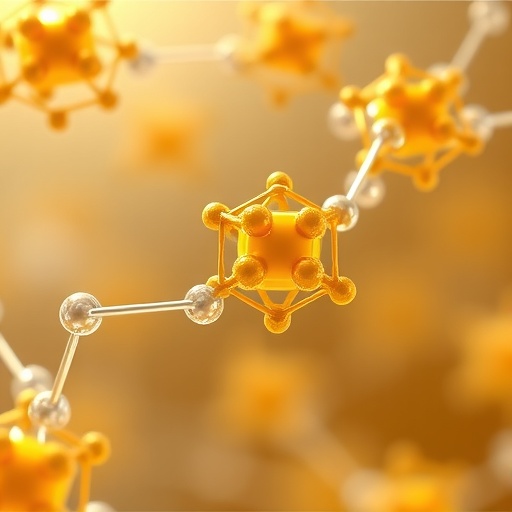In a groundbreaking advancement that could redefine the therapeutic landscape for lung cancer, researchers have unveiled a meticulously engineered nanostructured lipid carrier system loaded with xanthohumol, showcasing unprecedented efficacy in cellular uptake within human lung cancer cell line A549. This innovative approach, detailed in a recent publication in Medical Oncology, employs a sophisticated Box–Behnken design methodology to optimize the formulation and performance of these nanocarriers, propelling forward the potential of targeted cancer therapy.
Cancer remains one of the most formidable challenges in modern medicine, with lung cancer holding the grim distinction of being among the leading causes of cancer-related mortality globally. The intrinsic heterogeneity and resilience of cancer cells, combined with systemic toxicity of conventional chemotherapies, have perpetuated the quest for novel drug delivery systems that maximize therapeutic efficacy while minimizing adverse effects. The study spearheaded by Singh, Sharma, Arumugam, and colleagues introduces an expertly crafted nanostructured lipid carrier (NLC) system that encapsulates xanthohumol—a naturally occurring prenylated flavonoid known for its potent anticancer properties—thereby enhancing bioavailability and targeted delivery.
The ingenuity of this research lies in employing the Box–Behnken experimental design, a response surface methodology, to expertly navigate the complex interplay of formulation variables, including lipid concentration, surfactant levels, and sonication time. This statistical optimization allows for the fine-tuning of the NLCs’ physicochemical characteristics—particle size, zeta potential, and encapsulation efficiency—thereby directly influencing their stability and ability to traverse cellular barriers. Such precision engineering ensures that the resultant nanocarriers achieve an optimal balance between structural robustness and functional efficacy.
Characterization techniques revealed that the optimized NLCs possess a narrowly distributed particle size, averaging within the nanometer range, which is critical for enhanced endocytotic uptake by cancer cells. The zeta potential measurements underscored the stability of these nanoparticles in suspension, reducing aggregation and promoting consistent delivery. Encapsulation efficiency, a pivotal metric, demonstrated that a substantial proportion of xanthohumol was successfully integrated within the lipid matrix, ensuring controlled release kinetics and sustained therapeutic action at the tumor site.
The cytotoxic potential of these optimized NLCs was rigorously evaluated against the A549 human lung carcinoma cell line, a widely acknowledged in vitro model for lung cancer research. The observations revealed a markedly enhanced cytotoxic effect compared to free xanthohumol, attributable to improved cellular internalization facilitated by the nanoparticles’ physicochemical attributes. This underscores the critical advantage of nanotechnology-driven drug delivery systems in overcoming biological barriers and augmenting intracellular drug accumulation.
Furthermore, the study delineates the mechanistic underpinnings by which xanthohumol-loaded NLCs induce apoptosis and inhibit proliferation in the lung cancer cells. The nanoparticles’ ability to penetrate the cellular membrane with high efficiency triggered downstream signaling pathways leading to cell cycle arrest and programmed cell death. These findings are particularly compelling, as they suggest a dual function: not only do the NLCs effectively ferry the bioactive compound into the cell, but they also potentiate its pharmacodynamics, amplifying its antineoplastic activity.
This research integrates comprehensive in vitro evaluations with stringent formulation science to present a versatile platform for cancer therapy that goes beyond conventional chemotherapeutics. The lipid-based nanocarriers harness biocompatibility and biodegradability, reducing systemic toxicity—a paramount concern in chemotherapy—and enhancing patient safety profiles. The promise of these xanthohumol-loaded NLCs as a frontline therapy or adjunct treatment in lung cancer is profound, potentially transforming clinical outcomes.
What sets this study apart is the seamless amalgamation of natural product chemistry with cutting-edge nanotechnology and statistical optimization tools. The Box–Behnken design framework has not only streamlined formulation development but also provided critical data driving scalability and reproducibility, essential parameters for eventual clinical translation. This methodological rigor ensures that the transition from bench to bedside could be expedited without compromising quality or therapeutic potential.
The translational implications are vast, with this nanodelivery system offering a customizable template adaptable to other hydrophobic anticancer agents and different cancer models. By addressing drug solubility and stability issues inherent to many phytochemicals, this formulation strategy expands the oncology pharmacopeia, introducing safer, more efficacious treatment modalities.
Moreover, the innovation aligns with the growing trend towards personalized medicine, where nanoparticle formulation can be tailored to individual tumor biology and patient-specific pharmacokinetic profiles. The high cellular uptake observed in the A549 cell line paves the way for exploring targeted therapies against diverse lung cancer subtypes and resistance profiles, potentially overcoming current therapeutic challenges.
The success of this formulation also hinges on its scalability and manufacturing feasibility, which were partly addressed through the Box–Behnken optimization. Future studies might delve deeper into in vivo pharmacokinetics, biodistribution, and long-term safety to fully establish clinical viability. Nonetheless, these in vitro findings provide a robust foundation for subsequent animal studies and clinical trials.
With lung cancer continuing to claim millions of lives annually, innovative interventions like these nanostructured lipid carriers encapsulating xanthohumol could herald a new era in oncologic pharmacotherapy. By leveraging the synergy between natural anticancer compounds and nanotechnology, this approach could significantly enhance therapeutic indices, reduce adverse effects, and improve patient quality of life.
In conclusion, the work of Singh, Sharma, Arumugam, and their team sets a high benchmark in cancer nanomedicine, combining rigorous formulation science with potent natural therapeutics to achieve enhanced cellular targeting and cytotoxicity. Their meticulous application of statistical optimization methods exemplifies how multidisciplinary strategies can accelerate drug development. This promising platform opens exciting avenues for future research and potential clinical breakthroughs in the fight against lung cancer.
Subject of Research: Nanostructured lipid carriers (NLCs) of xanthohumol designed for enhanced cellular uptake and cytotoxicity in human lung cancer cell line A549.
Article Title: Box–Behnken-designed nanostructured lipid carriers of xanthohumol for enhanced cellular uptake in human lung cancer cell line A549: formulation, optimization, characterization, and cytotoxicity assessment.
Article References:
Singh, S., Sharma, H., Arumugam, M.K. et al. Box–Behnken-designed nanostructured lipid carriers of xanthohumol for enhanced cellular uptake in human lung cancer cell line A549: formulation, optimization, characterization, and cytotoxicity assessment. Med Oncol 42, 525 (2025). https://doi.org/10.1007/s12032-025-03087-4
Image Credits: AI Generated




